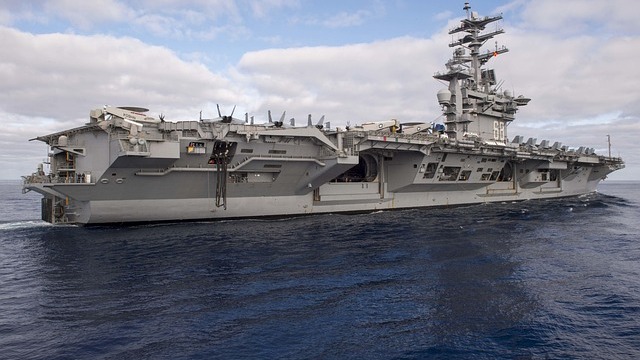
Why the Shift in Naval Power Demands Attention Now
The U.S. Navy is at a pivotal moment in history, with its shipbuilding capabilities facing significant challenges as China’s naval fleet continues to expand rapidly, now boasting more than 400 vessels. According to the Government Accountability Office (GAO), a combination of aging infrastructure, maintenance backlogs, and a limited shipbuilding industry is causing concern over the Navy's ability to compete in any potential maritime conflict with China. This trend may affect not only military dynamics in the Indo-Pacific region but also broader security and economic strategies.
The Landscape of Naval Power: A Historical Perspective
Historically, naval dominance has dramatically shifted the balance of power among nations. The U.S. Navy dominated the seas since the end of World War II, but recent studies suggest that this supremacy is under threat. As noted by analysts, China’s People’s Liberation Army Navy (PLAN) is rapidly ascending in size and capability. The current trajectory indicates that if China maintains this pace and the U.S. cannot revive its shipbuilding capabilities, we could see a redefined superpower landscape by the end of the decade.
The Importance of Naval Strength for Global Stability
The navy is not only a protective force but also a strategic asset that fosters alliances and ensures trade routes remain safe. If the U.S. Navy falls behind, American allies like Japan and South Korea may feel pressured to bolster their own military expenditures. Meanwhile, China may become emboldened in regional disputes as its naval capabilities overshadow other nations in the area.
Cost-Effective Strategies for Job Creation and Transition Assistance
One vital aspect of this situation is the employment opportunities available for military personnel and their families. The concern about dwindling shipbuilding capabilities directly links to potential job losses in the military sector. Initiatives such as AristaHire are creating pathways for transitioning service members to find careers in domestic shipbuilding and other defense-related sectors. This ensures not just job stability, but also contributes to national security.
Real-Life Impacts: Families and Communities
For active-duty service members and their families, understanding the strategic significance of naval power can provide context for the careers they pursue and the locations they may be stationed. Families are encouraged to engage with organizations like Valor in Action, which focuses on honoring and sharing stories of military valor. Knowing the bigger picture helps them navigate various transitions and stay informed about how these changes impact their lives.
Turning the Tide: The Future of U.S. Naval Capabilities
While the challenges of shipbuilding are daunting, they also present opportunities for growth and development. Experts recommend that the U.S. turn towards partnering with key allies to bolster naval production capabilities and improve technology transfer. This is where family and community support plays a crucial role, as engaged citizens can advocate for necessary funding and policy reforms that prioritize defense.
Steps Towards Action: Engaging with the Community
As military families and veterans navigate these complex dynamics, they are encouraged to get involved. Whether through advocacy, supporting veteran job initiatives, or sharing personal stories, each act contributes to a larger narrative that honors military service while reinforcing the importance of community. Taking a proactive role can not only help stabilize the local economy but also enhance personal growth and resilience.
Ultimately, staying informed and involved is key. As we witness these shifts in power dynamics, it’s vital for military families and the community at large to support each other and advocate for favorable policies that ensure both economic success and national security.
 Add Row
Add Row  Add
Add 




Write A Comment